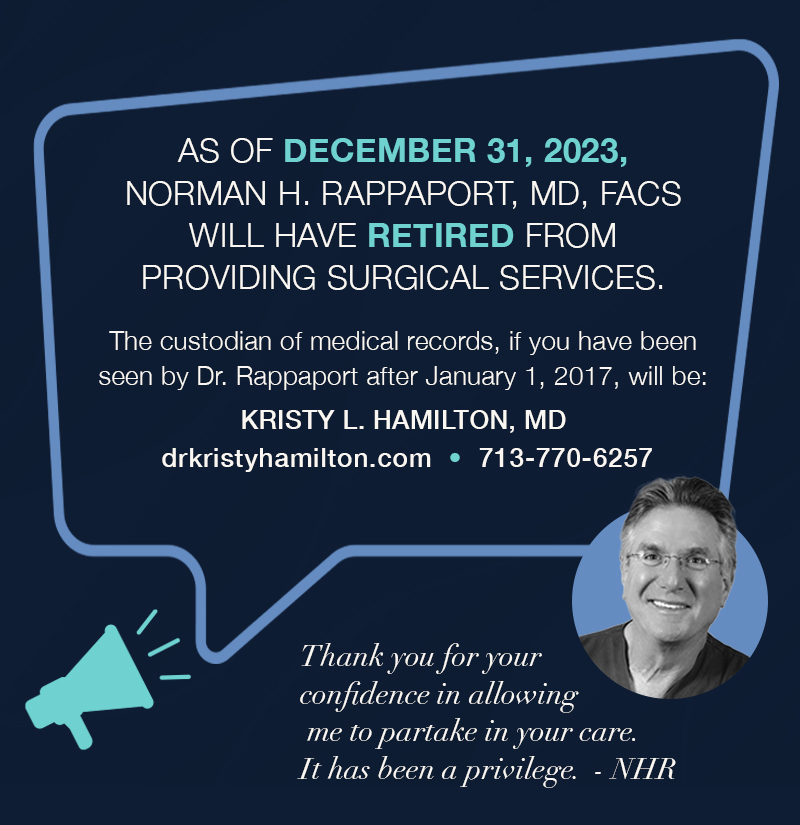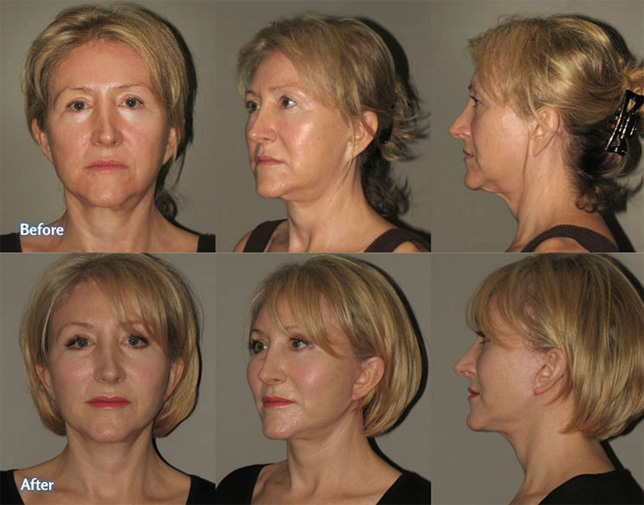Breast Augmentation (Breast Implants) Houston
Breast augmentation is a surgical procedure designed to make a woman’s breasts larger and fuller by placing implants beneath the breast tissue. If you are a woman considering this procedure, you are not alone. According to the American Society of Plastic Surgeons, nearly 300,000 breast augmentation procedures were performed in 2013 alone, making it the most popular cosmetic surgical procedure in the U.S.
In addition to simply enlarging the breasts, breast augmentation offers the following benefits:
- Balance your breasts if they are unequal in shape or size
- Add firmness if your breasts have lost volume
- Bring your upper body into better proportion to your lower body
Breast augmentation may be performed as a single procedure, or in combination with another surgery like a breast lift to improve overall results.
Breast Augmentation in Houston
Options in Breast Augmentation
The decision to have breast augmentation opens the door to many more choices you must make in preparation for your procedure.
Saline or Silicone:
Saline implants are comprised of silicone shells that are filled with sterile saline solution after the implant is placed in the breast. The advantage to saline implants (aside from a slightly lower cost) is the fact that they do not need a very large incision to place them in the breast. However, saline implants carry a higher risk of palpability and visible rippling of the breast around the implant edges.
Silicone implants are also made of silicone shells, but these implants are filled with a cohesive silicone substance. Many women today prefer silicone gel implants because they look and feel more like natural breast tissue. These implants may require a longer incision, since they are filled before they are inserted into the breast.
Implant Size:
Breast implant sizes are measured in cubic centimeters, ranging from 125-700. The implant size does not correspond to a particular bra cup size. During your consultation, Houston Breast Surgeon Dr. Rappaport will recommend a range of implant sizes in proportion to the base width of your breast and the amount of breast tissue that you have. You will then have the opportunity to “try on” different implant sizes to see how they will look on you.
Implant Shape:
There are three different implant shapes to choose from:
- Round Implants – can produce greater fullness above the nipple than the natural breast
- High-Profile Round Implants – create more projection from the chest wall
- Anatomical or Teardrop-Shaped Implants – are shaped fuller at the bottom than at the top, like natural breasts.
Smooth or Textured:
Implants come in both smooth and textured styles:
- Smooth implants – a popular choice that may move slightly within the breast
- Textured implants – feature an outer shell that resembles fine sandpaper
Some studies have shown textured implants may help reduce the incidence of capsular contracture, or firming of the pocket around the implant. The rough texture promotes the body tissue’s adherence to the implant surface. This may also help prevent the implant from moving beneath the breast—especially important for anatomically shaped implants.
Dr. Rappaport has performed hundreds of breast augmentation procedures in Houston and is widely recognized for producing beautiful, natural-looking results. During your personal consultation, he will evaluate you, explain the breast augmentation procedure, answer your questions and offer recommendations to give you the fuller, more beautiful breasts you desire.
How is Breast Augmentation Performed?
Like your choice of implants, there are many variations that can take place during the breast augmentation procedure. From the type of incision used to the placement of the implant, Dr. Rappaport will customize your procedure based on your unique needs, body size and desired results.
Incision Placement:
There are several techniques for placing breast implants:
- Near the inframammary crease – In this widely used technique, silicone gel or saline implants are inserted through incisions near the fold under the breasts.
- Around the areola (periareolar) – Silicone gel or saline implants can be placed through an incision around the edge of the areola—the dark tissue surrounding the nipple.
- Axillary (in the armpit) – Some women choose to have their implants placed through an incision in the armpit.
Implant Placement:
After the incision is made, Dr. Rappaport creates a pocket or envelope in which the implant is inserted. This pocket can be:
- Directly behind the breast tissue (subglandular); or
- Below the pectoral muscle that underlies the breast tissue (submuscular).
While implants had typically been placed directly behind the breast tissue in the past, if the patient does not have sufficient tissue to cover the implant, the implant edges may be visible on the outside of the breast. Today, submuscular placement is usually the first choice for surgeons and patients, due to the more natural results and the ability to see more of the breast during a mammogram. Dr. Rappaport also believes submuscular placement may reduce the risk capsular contracture.
Dr. Rappaport usually performs breast augmentation as an outpatient procedure under general anesthesia. The surgery usually takes about one hour to complete. Patients will spend approximately one more hour recovering in the surgical facility before they are released to go home. You will need to have someone to drive you home and stay with you for the first 24 hours to ensure there are no complications after your procedure.
Breast Augmentation Recovery
After breast augmentation surgery, you will be given a support wrap to wear, which minimizes swelling and promotes the healing process. Discomfort after surgery can be effectively managed with oral pain medication. You will be up and around on the evening of your surgery and can generally return to most regular activities within a few days. Light exercise is usually resumed after three weeks.
Dr. Rappaport Answers Questions about Breast Augmentation
Which type of implants do most of your patients choose?
Most of my patients choose silicone gel implants. During the consultation process, I counsel my patients on the distinctions between silicone gel and saline implants, and most are comfortable to go forward with silicone gel.
Do most of your patients want to look like they’ve had breast implants?
No. A good number of my patients are women who have had children and are trying to get back their pre-pregnancy shape, including the firmness of their breasts. I also have many younger women patients who are interested in natural-looking breast enhancement. Most of my patients don’t want their breasts walking in the room before they do. I have a reputation for doing breast augmentation that’s in proportion to a woman’s size and shape. For the most natural-looking results, a woman’s breast implants should not be too large for her torso.
My breasts are uneven. Will breast implants help?
If your breasts are uneven or asymmetrical, I will do what’s necessary to give you a more balanced look. I may need to do a breast lift on one side or use a larger implant on one side than the other, for example. During your personal consultation, I will evaluate your breasts and recommend a treatment plan to make your breasts as even as possible.
Will my breast implants interfere with getting a mammogram?
No, but when you go for your mammogram, be sure to tell the technician that you have implants. You will then have a diagnostic series as opposed to a screening mammogram. A special mammography method known as the Eklund technique makes it easier to visualize more of the breast tissue in women with implants. This technique is available at every accredited mammography facility in the U.S.
What happens if an implant ruptures?
Both silicone gel and saline implants are made with a thick shell to help prevent rupture — but ruptures can occur. If a saline implant ruptures, you will know it. The implant will visibly deflate as the saline, or saltwater, is absorbed by the body. You will immediately see a loss in breast volume. Silicone gel implants can develop an unnoticeable or ‘silent’ rupture. Today’s silicone gel implants have a more cohesive filling than prior generations of implants. If a rupture occurs, the gel is designed to remain intact.
Are there any guarantees that my implants won’t break or leak?
There are no guarantees, but there are warranties available. Implants are engineered to withstand considerable pressure or impact. However, they are not lifetime devices. After your surgery, we will give you a serial number and warranty card from the manufacturer. You can also choose to purchase an extended warranty.
How can I tell if a silicone gel implant has ruptured?
In addition to your routine mammograms, the FDA recommends that you get an MRI screening three years after you have silicone implant surgery, and every two years thereafter to help detect
silent ruptures.
What is capsular contracture?
It is normal for the body to form a lining or capsule around any foreign body such as a breast implant. In some cases, that capsule will begin to tighten, which can result in discomfort or distortion of the breast. A surgical procedure can be performed to correct this situation if it occurs. In rare cases, the implants must be replaced or removed altogether. Following pre- and post-operative instructions can help reduce your risk of capsular contracture.
What causes capsular contracture?
The causes of capsular contracture are not fully understood. The good news is that the incidence and degree of capsular contracture appears to be less in the latest generation of implants.
Do implants need to be replaced every 10 years?
No. Implants do not have an expiration date. But it is important to understand that they are not lifetime devices. Just like the car you drive today will not last forever, neither will your implants.
Dr. Rappaport has years of experience performing breast augmentation in the Houston area and is well known for his ability to produce natural, beautiful results. He will work with you throughout the process of choosing the right implant and surgical technique for your specific needs to produce the best possible results. To learn more, contact Houston Center for Plastic Surgery at 713-790-4500.
6560 Fannin Street, #1812
Houston, Texas 77030
Phone: (713) 790-4500
Fax: (713) 793-1299
Email: info@hcps.cc


